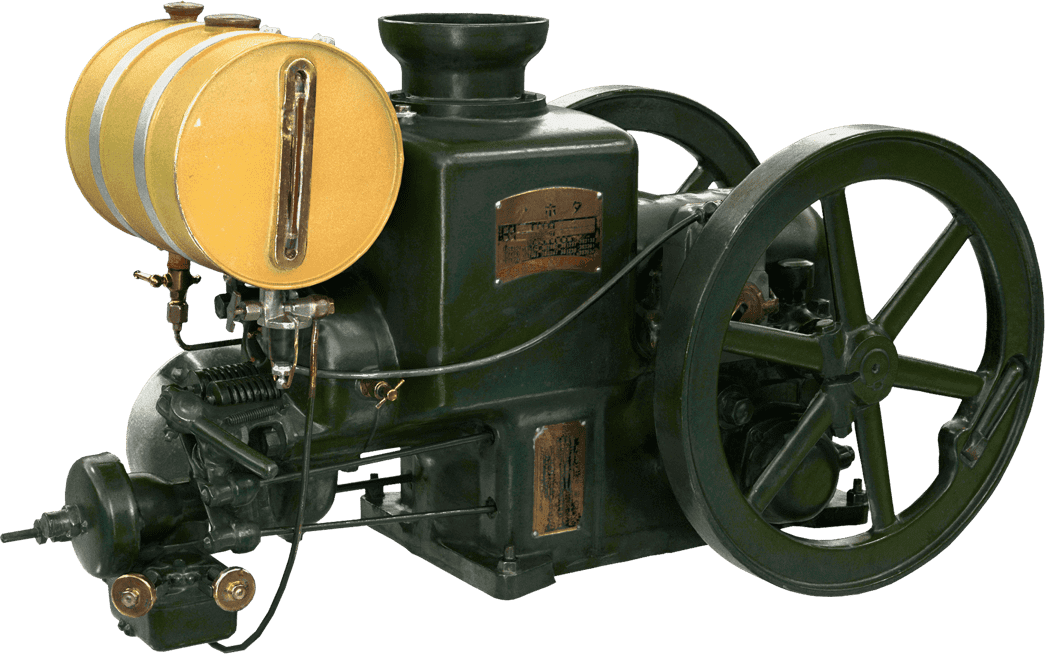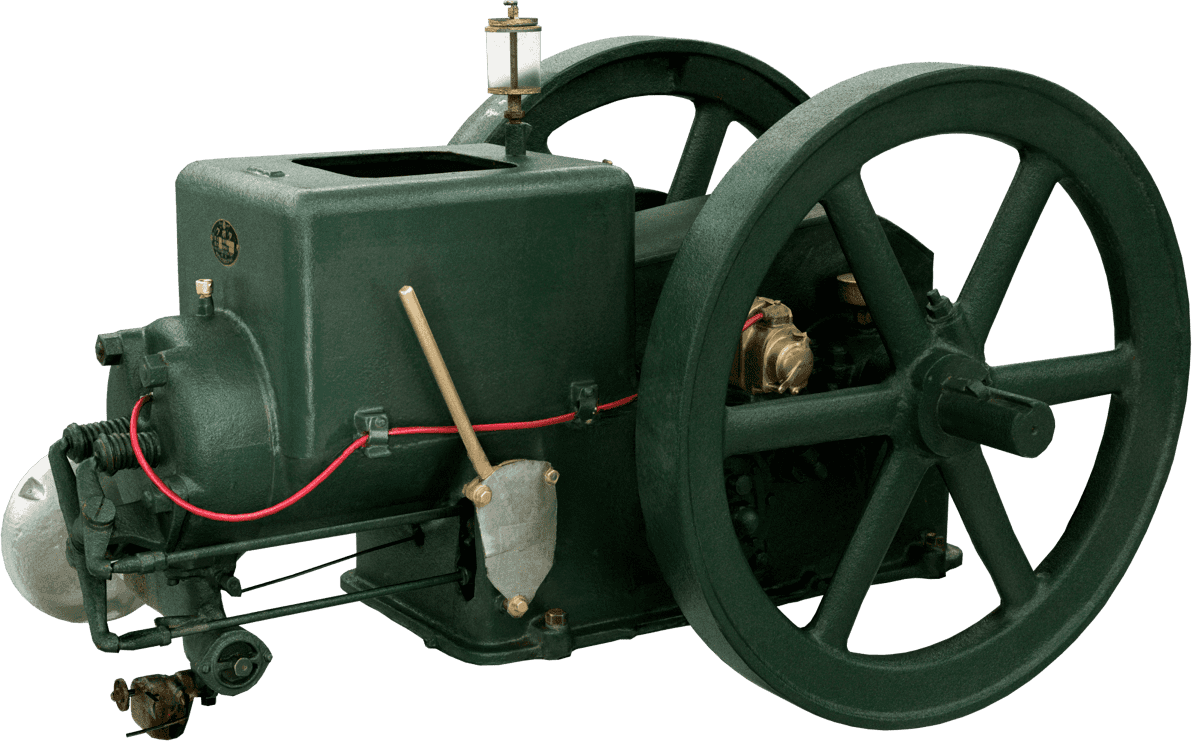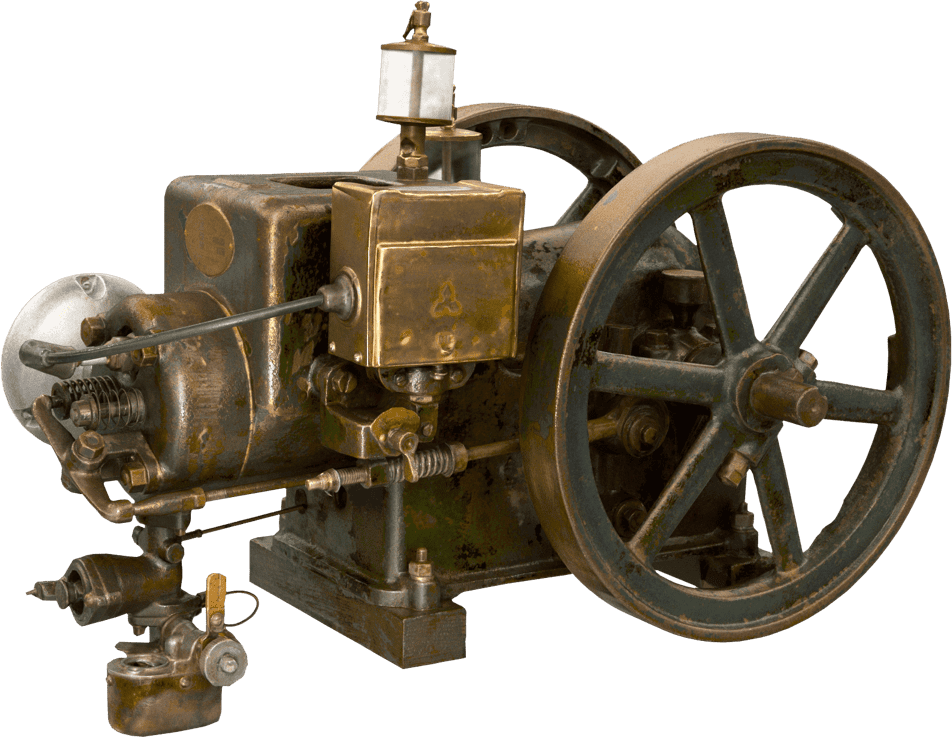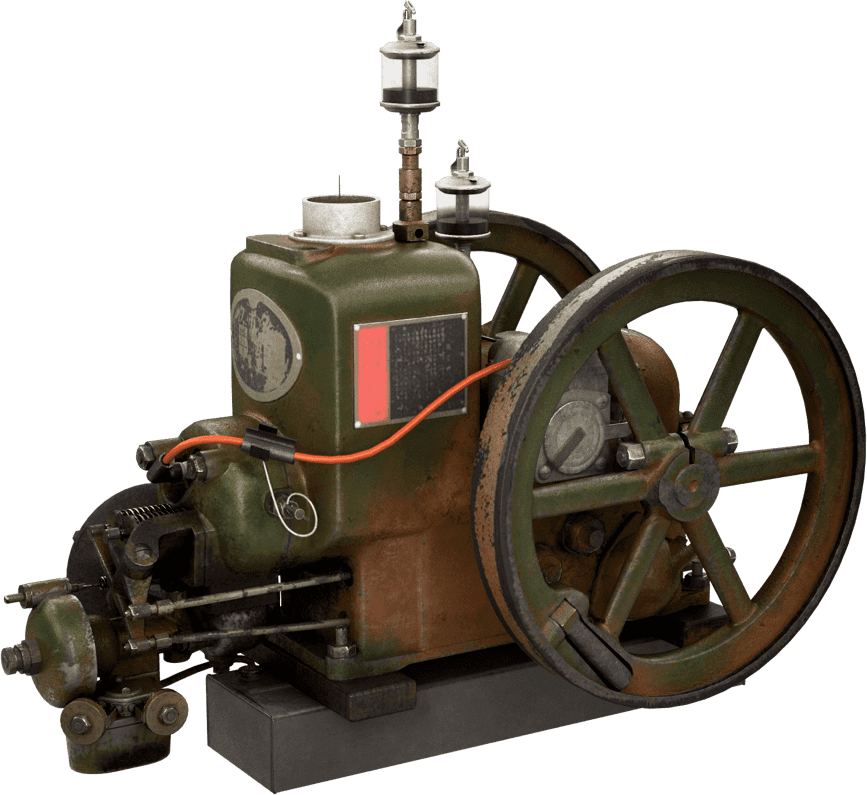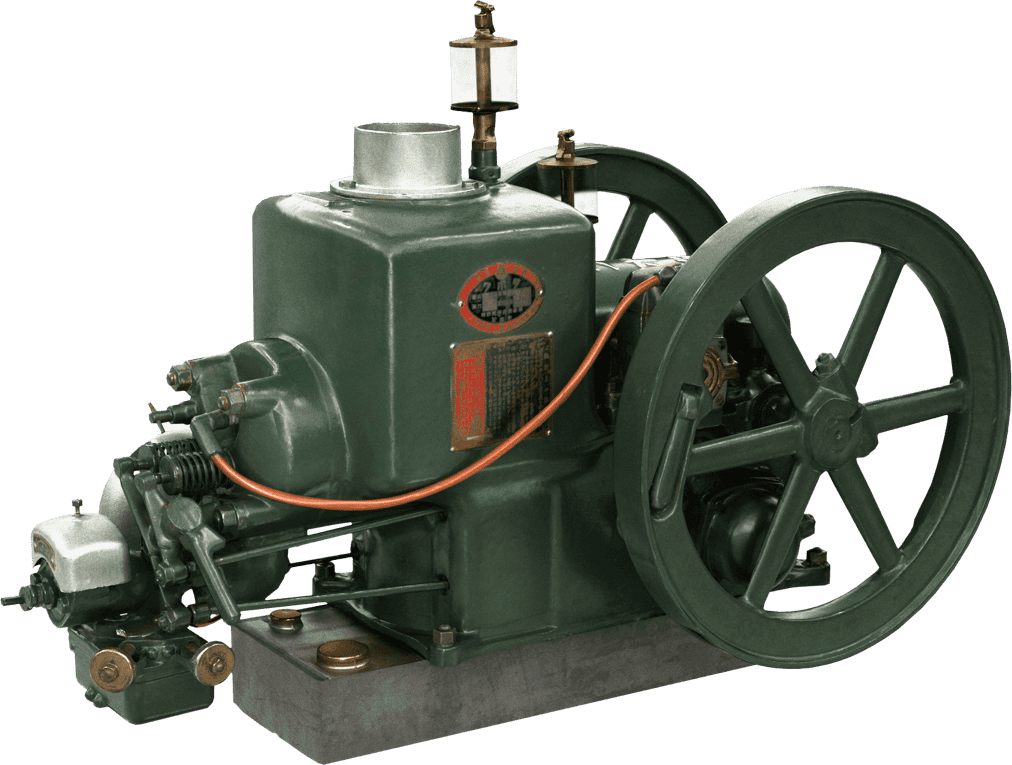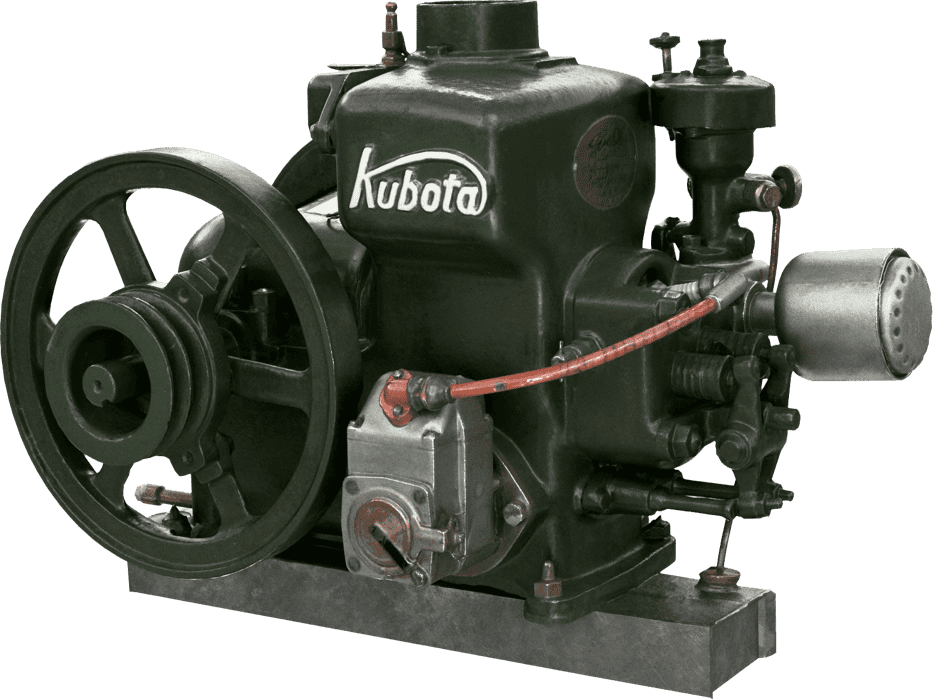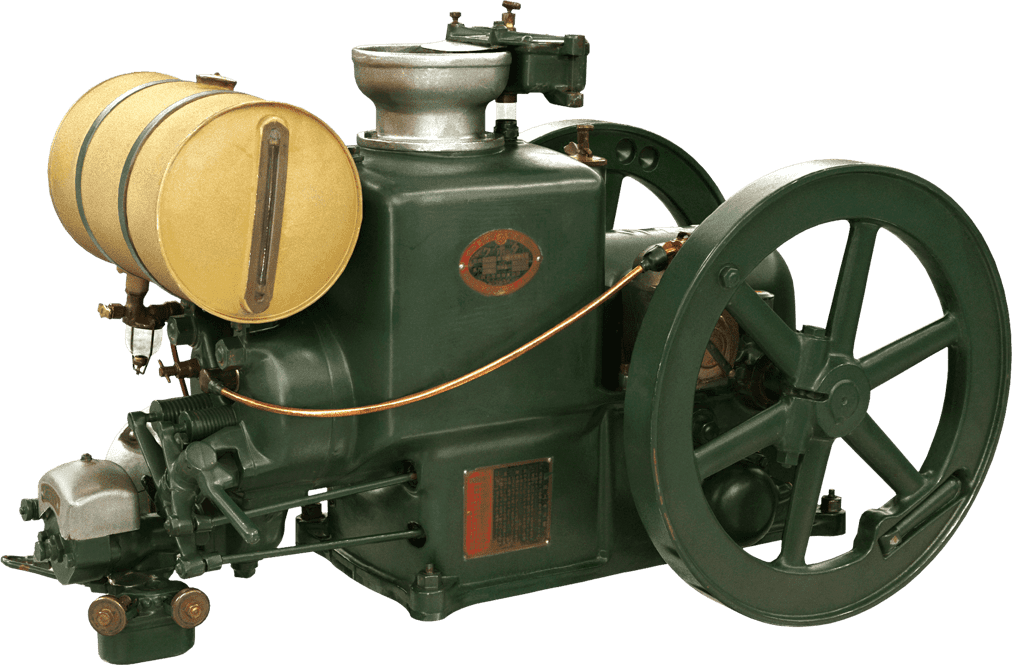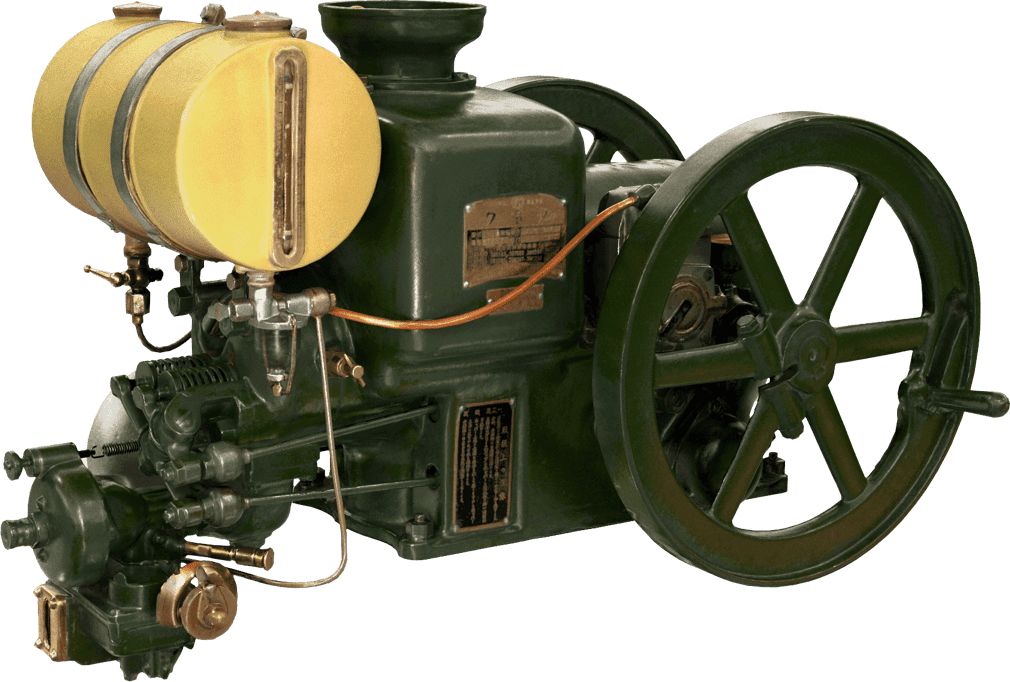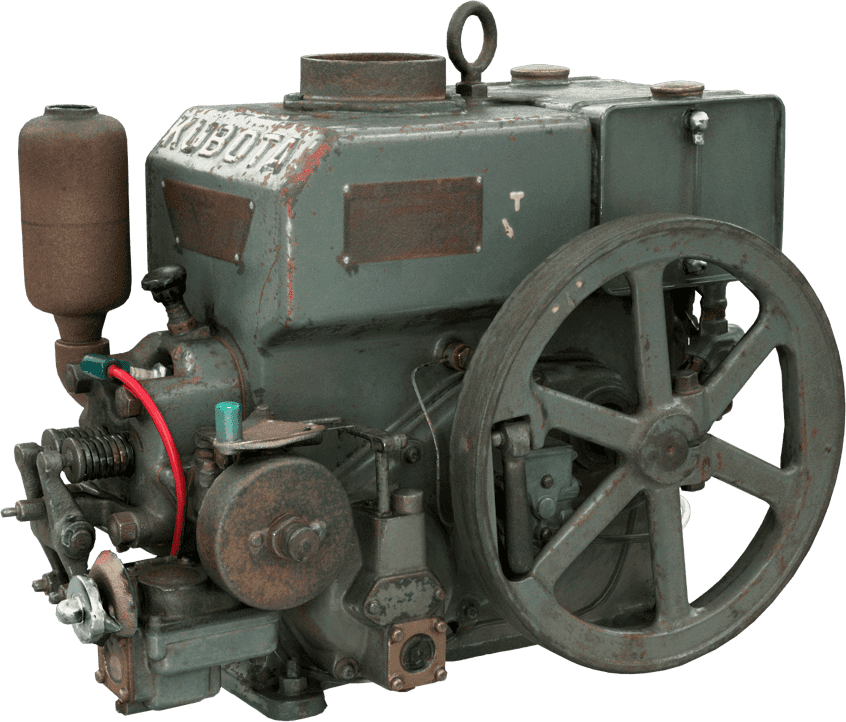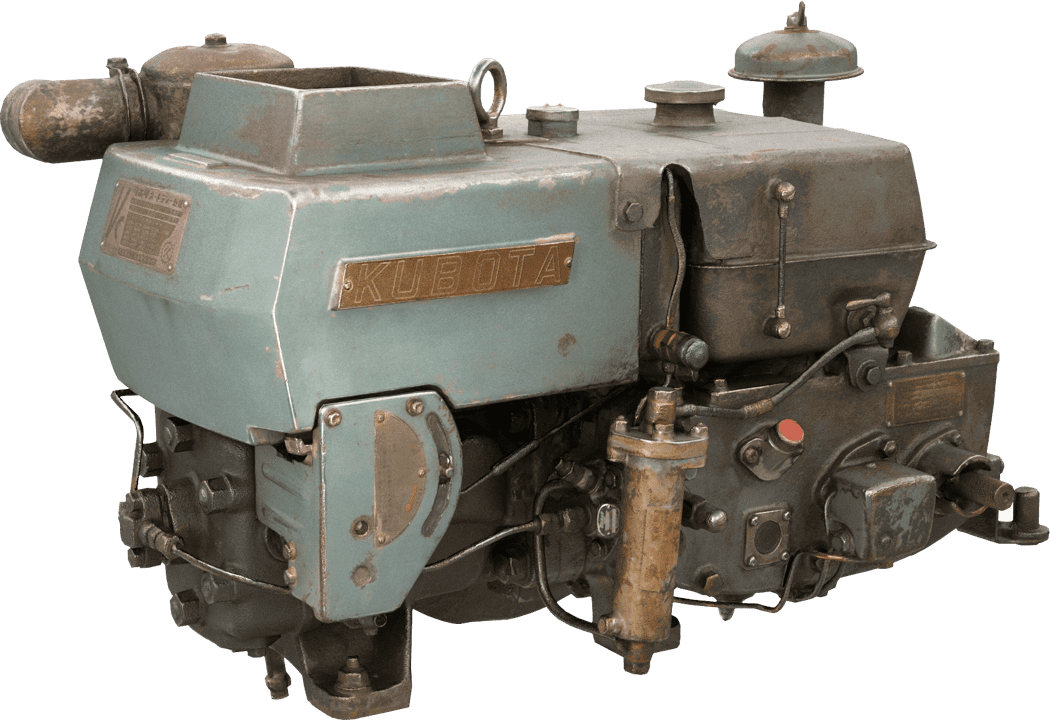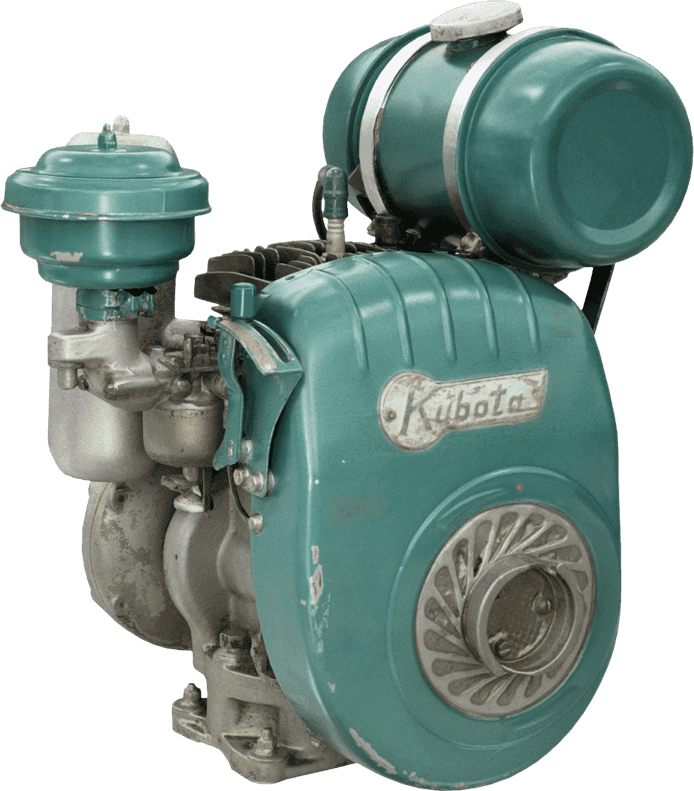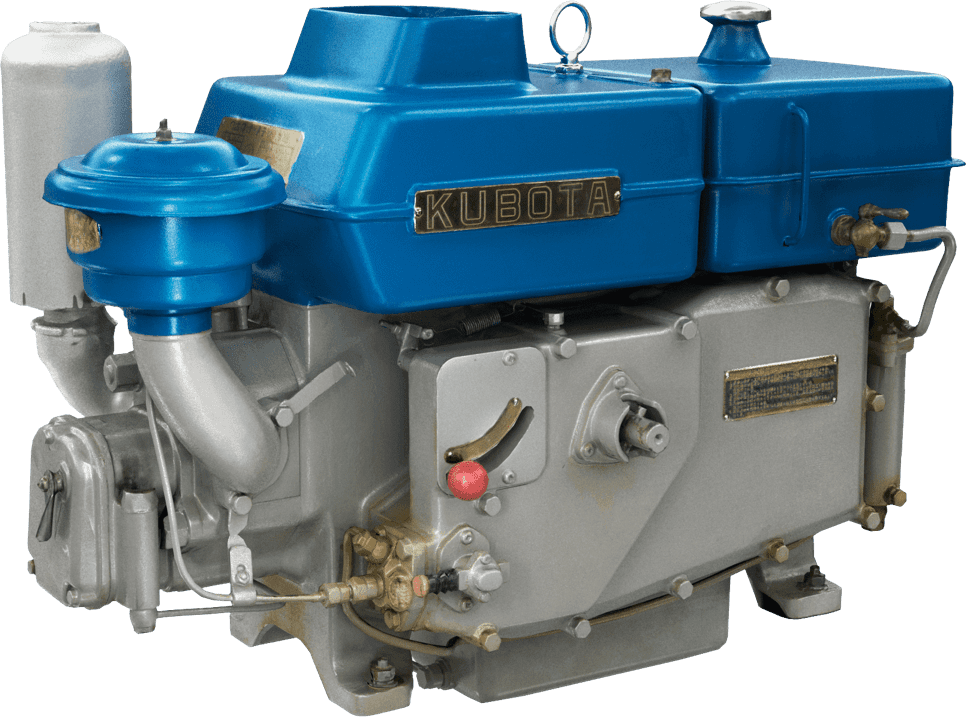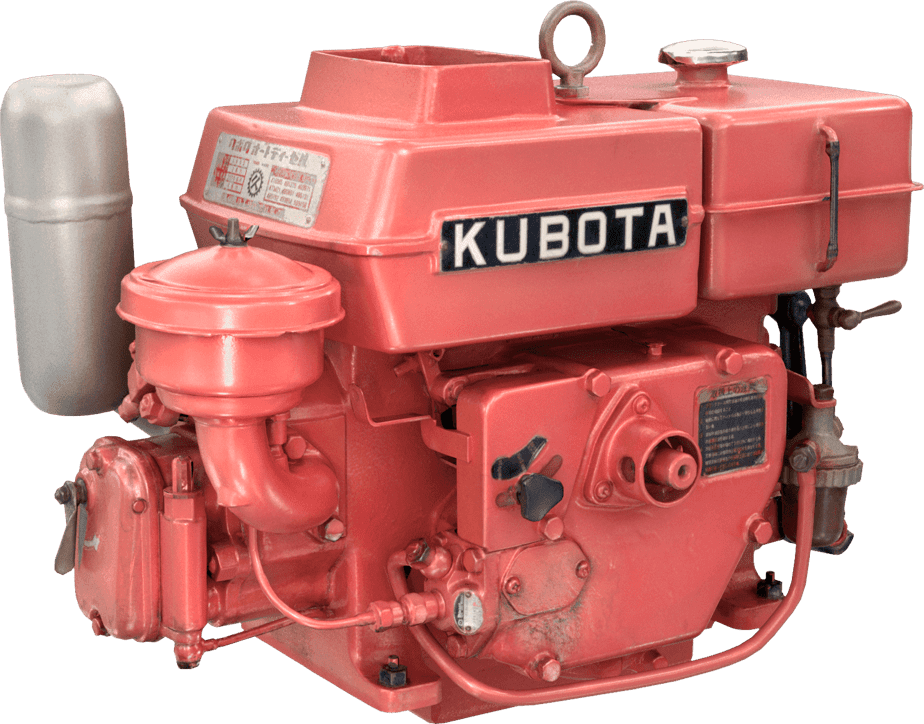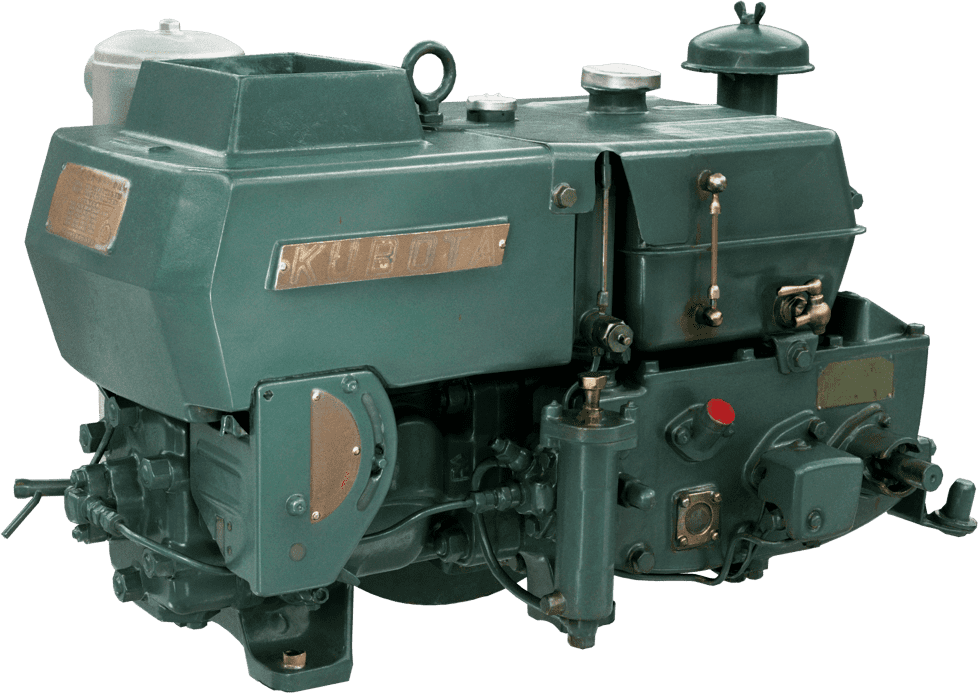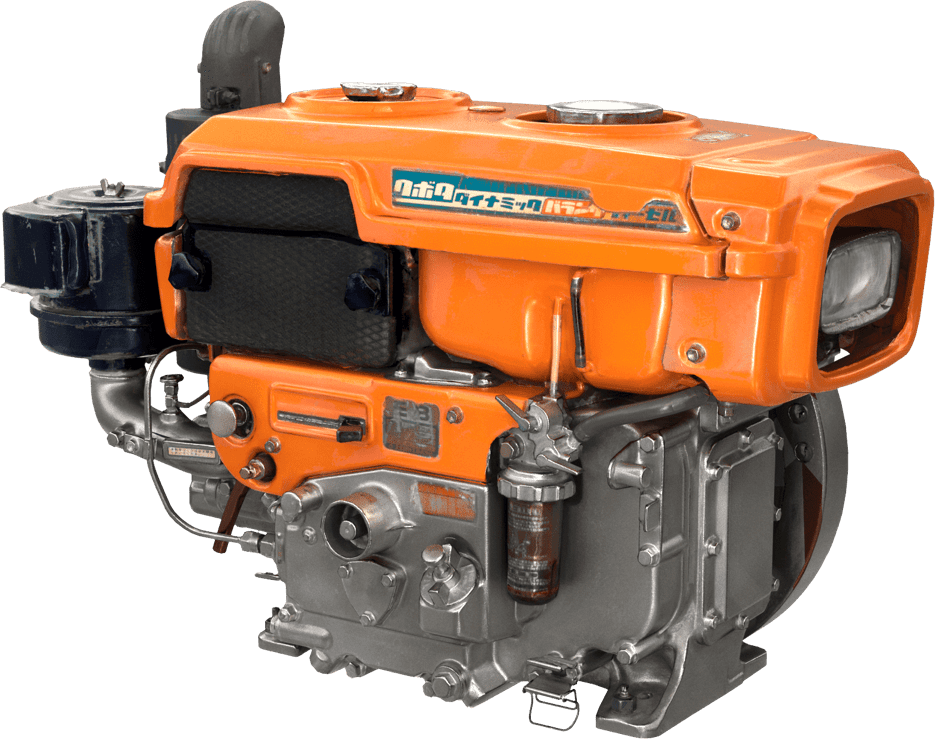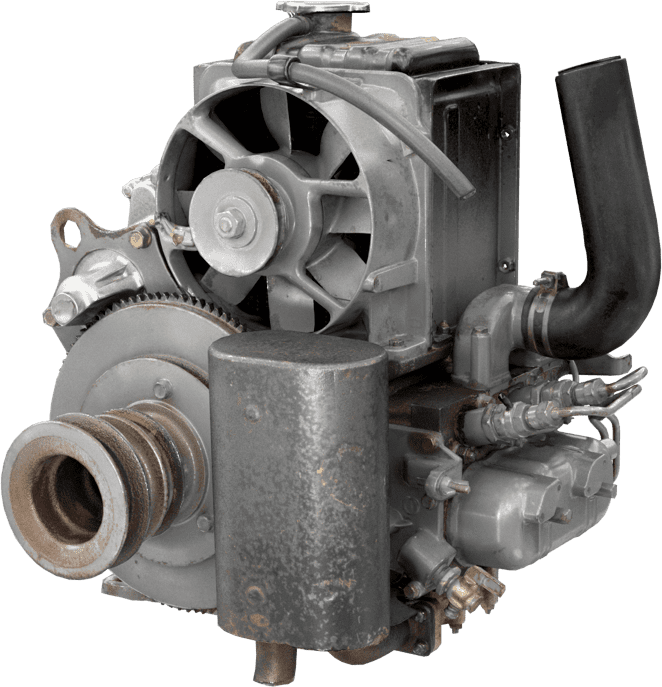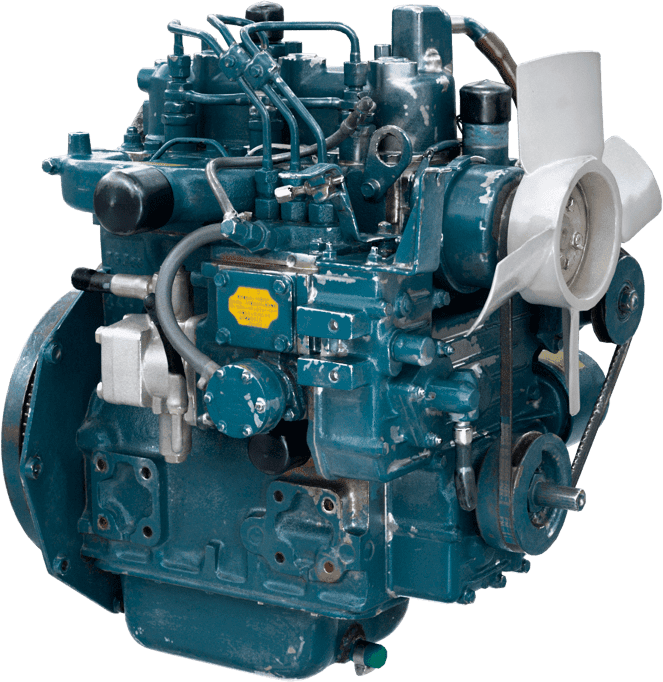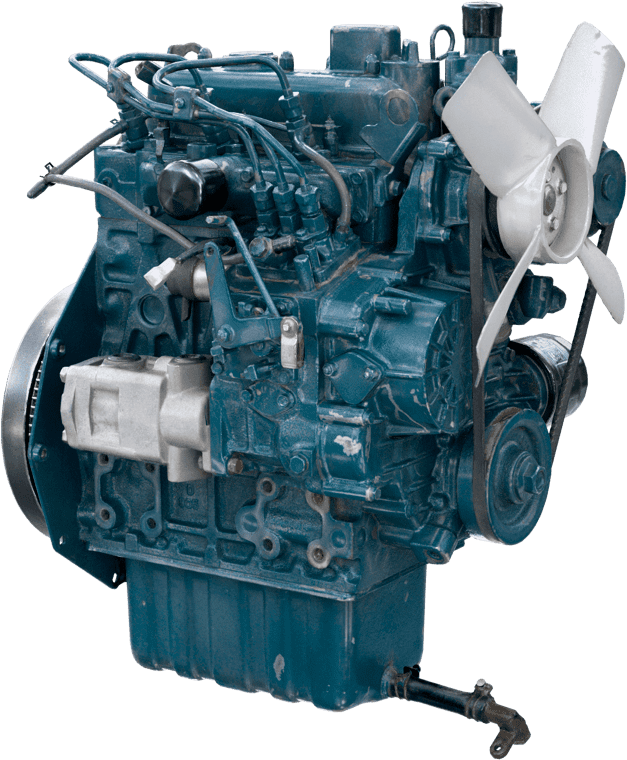features
BHD was a further-improved model following on from BH, BHB and BHC.
Lubrication method
The improved lubrication method allowed for greater power output.
Fuel tank
From this era on, the fuel tank that was located at the bottom of the engine has been changed to the top (barrel-like part).
It seems that as the uses for engines increased, improvements were made based on user feedback that refueling the engines was awkward for certain applications and uses.
specification
- Year
- 1954
- Fuel
- Petroleum
- Type
- Horizontal, water-cooled (medium-speed)
- Cylinders
-
- Number of cylinders
- 1
- Rated output / speed
- 4.5/1400
- Length x Width x Height (mm)
- 880/470/570
applications
-
Power Sprayer
-
Generator
-
Rice Husker
-
Pumping / Irrigation Machine
story
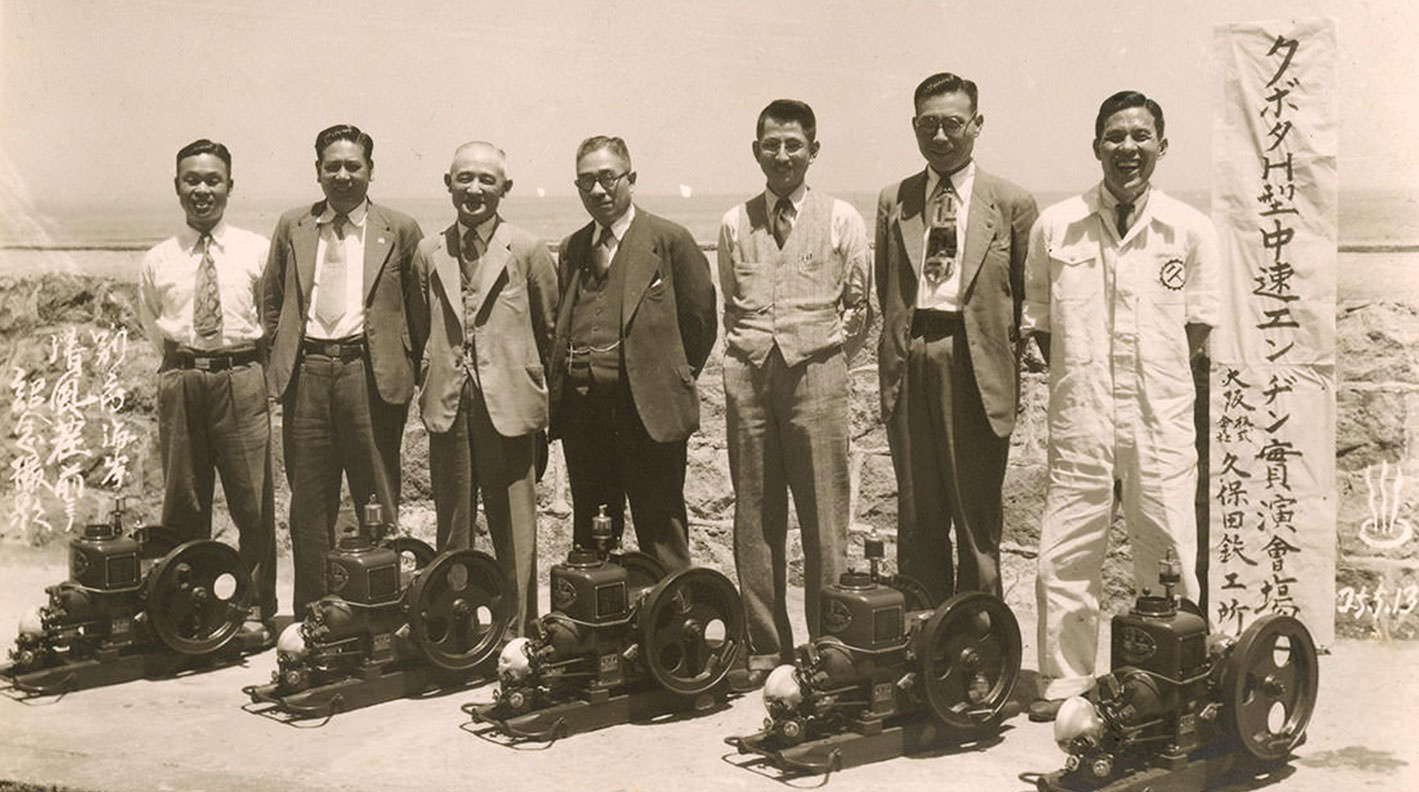
Postwar Reconstruction Increases Demand for Engines
A few years following the end of World War II, the Japanese economy had recovered from the chaos and was entering an era of free competition. Engines were valuable because they were useful for increasing food production, which caused demand to explode.Kubota resumed manufacturing engines, which were the heart of Japanese industry.
Photos
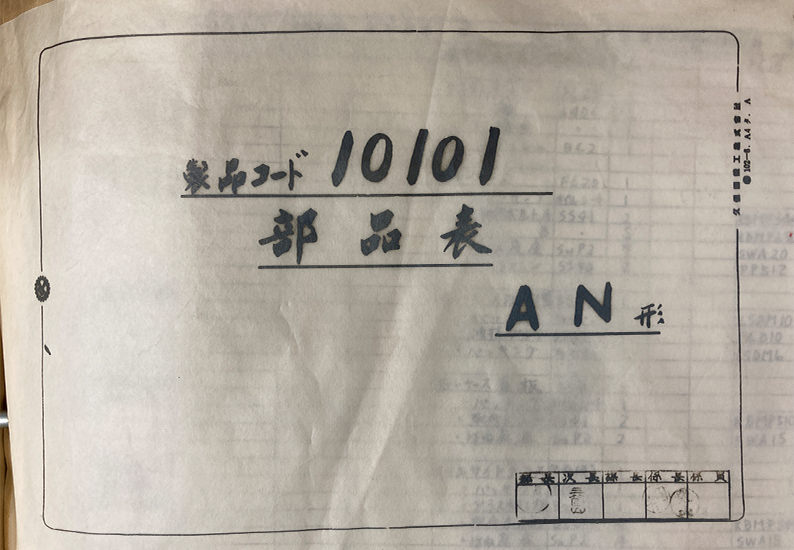
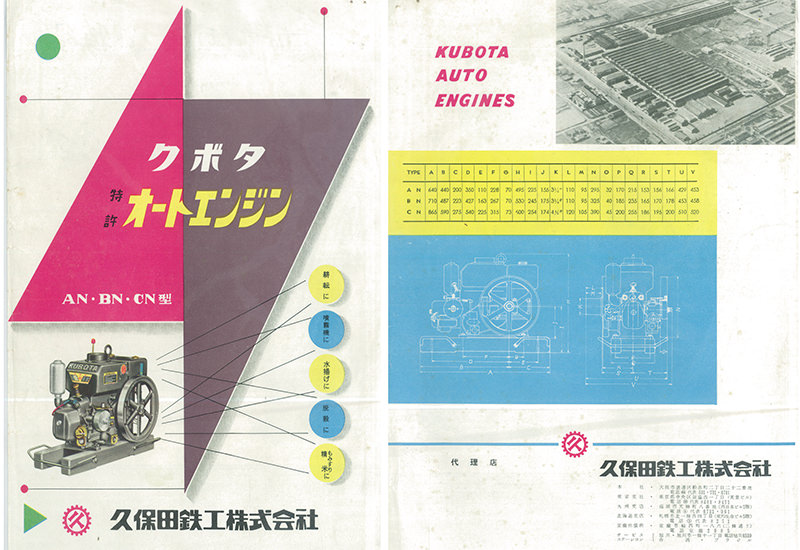
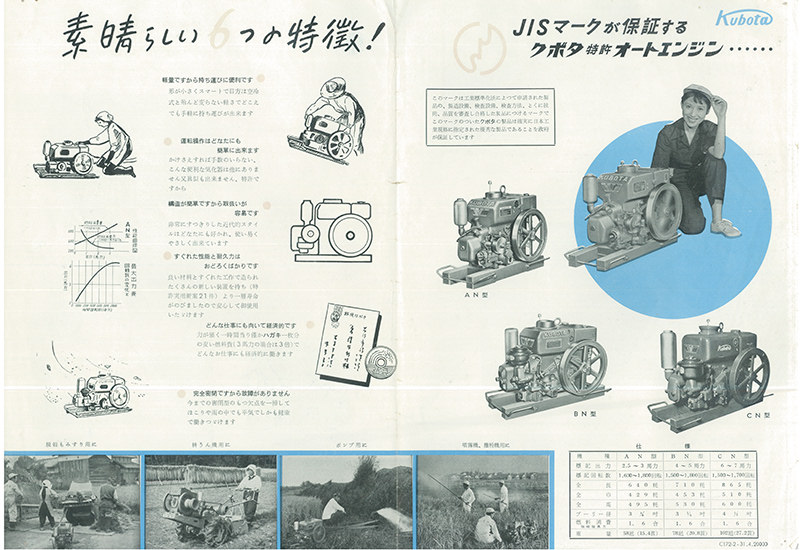
Discover other engines
